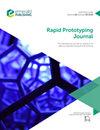Explainable deep neural network for in-plain defect detection during additive manufacturing
IF 3.6
4区 工程技术
Q1 ENGINEERING, MECHANICAL
引用次数: 0
Abstract
Purpose The purpose of this study is to develop a deep learning framework for additive manufacturing (AM), that can detect different defect types without being trained on specific defect data sets and can be applied for real-time process control. Design/methodology/approach This study develops an explainable artificial intelligence (AI) framework, a zero-bias deep neural network (DNN) model for real-time defect detection during the AM process. In this method, the last dense layer of the DNN is replaced by two consecutive parts, a regular dense layer denoted (L1) for dimensional reduction, and a similarity matching layer (L2) for equal weight and non-biased cosine similarity matching. Grayscale images of 3D printed samples acquired during printing were used as the input to the zero-bias DNN. Findings This study demonstrates that the approach is capable of successfully detecting multiple types of defects such as cracks, stringing and warping with high accuracy without any prior training on defective data sets, with an accuracy of 99.5%. Practical implications Once the model is set up, the computational time for anomaly detection is lower than the speed of image acquisition indicating the potential for real-time process control. It can also be used to minimize manual processing in AI-enabled AM. Originality/value To the best of the authors’ knowledge, this is the first study to use zero-bias DNN, an explainable AI approach for defect detection in AM.可解释深度神经网络在增材制造过程中的缺陷检测
本研究的目的是为增材制造(AM)开发一个深度学习框架,该框架可以检测不同的缺陷类型,而无需接受特定缺陷数据集的训练,并可应用于实时过程控制。本研究开发了一个可解释的人工智能(AI)框架,一个用于增材制造过程中实时缺陷检测的零偏差深度神经网络(DNN)模型。在该方法中,将DNN的最后一个密集层替换为两个连续的部分,一个表示为降维的规则密集层(L1)和一个表示为等权和无偏余弦相似匹配的相似匹配层(L2)。将打印过程中获取的3D打印样品的灰度图像作为零偏差深度神经网络的输入。本研究表明,该方法能够在不需要对缺陷数据集进行任何预先训练的情况下,以高精度成功检测出多种类型的缺陷,如裂纹、串和翘曲,准确率达到99.5%。一旦模型建立,异常检测的计算时间低于图像采集的速度,这表明了实时过程控制的潜力。它还可以用于减少人工智能AM中的人工处理。据作者所知,这是第一个使用零偏差深度神经网络的研究,这是一种可解释的人工智能方法,用于增材制造中的缺陷检测。
本文章由计算机程序翻译,如有差异,请以英文原文为准。
求助全文
约1分钟内获得全文
求助全文
来源期刊

Rapid Prototyping Journal
工程技术-材料科学:综合
CiteScore
8.30
自引率
10.30%
发文量
137
审稿时长
4.6 months
期刊介绍:
Rapid Prototyping Journal concentrates on development in a manufacturing environment but covers applications in other areas, such as medicine and construction. All papers published in this field are scattered over a wide range of international publications, none of which actually specializes in this particular discipline, this journal is a vital resource for anyone involved in additive manufacturing. It draws together important refereed papers on all aspects of AM from distinguished sources all over the world, to give a truly international perspective on this dynamic and exciting area.
-Benchmarking – certification and qualification in AM-
Mass customisation in AM-
Design for AM-
Materials aspects-
Reviews of processes/applications-
CAD and other software aspects-
Enhancement of existing processes-
Integration with design process-
Management implications-
New AM processes-
Novel applications of AM parts-
AM for tooling-
Medical applications-
Reverse engineering in relation to AM-
Additive & Subtractive hybrid manufacturing-
Industrialisation
 求助内容:
求助内容: 应助结果提醒方式:
应助结果提醒方式:


